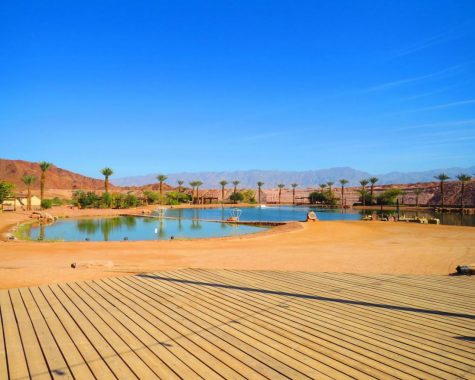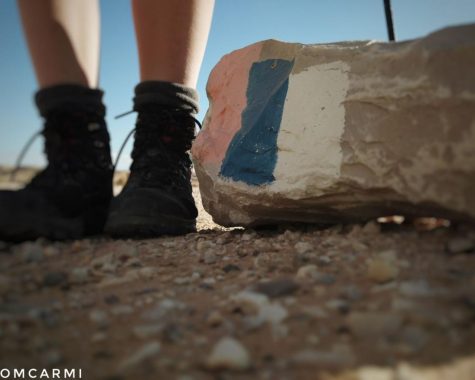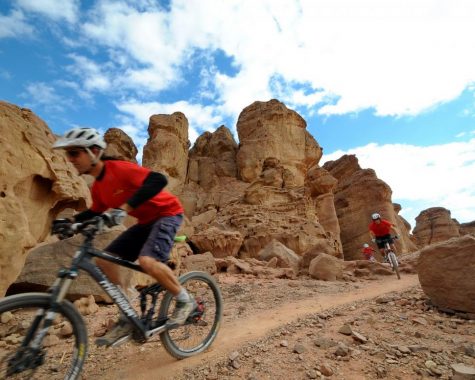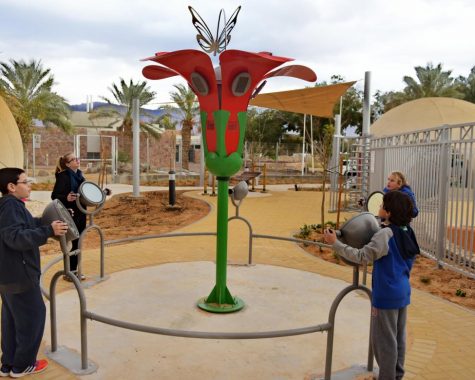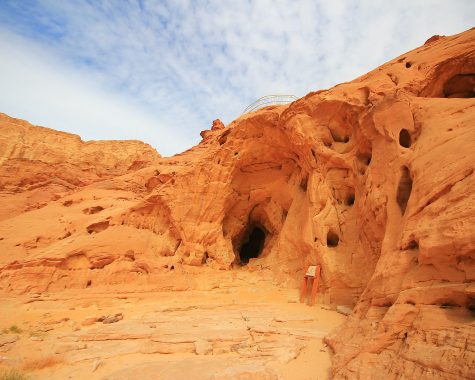The Cave of the Roman Soldier –”Canyon of Faces”
Park your vehicle at the edge of the road that crosses the dry river channel of Timna, approximately 250 m after “The Mushroom “, you see the sign that directs you to the “Canyon of Faces”.
Continue “upstream” to the west, facing the cliffs of Timna Valley and Mount Berech, which soars to a height of 548 meters, distinguished by a pair of antennae on the summit.
On both sides of the wad there are green bushes with fleshy leaves known as the Sniper plant or more commonly the Caper plant. This plant manages to maintain its strong color throughout the year. Each leaf is coated with a waxy cuticle that prevents the escape of water vapor. During the months of March to August, the Caper has a beautiful white blossom that only lasts for one day. You are probably familiar with the Caper plant buds that are usually pickled in various cuisines. Caper jam is made from the plant’s fruit and the jam can be purchased at Yotvata Inn.
The channel curves south and left. Follow the blue marked trail for approximately 10 minutes until arriving at a “cave” located on the southern side of the stream.
A structure made of large stones (fieldstones), can been seen on the right side of the cave, resembling a kind of room with an opening. This Chalcolithic building was built some 5,000 years ago. On the northern side of the cave, view the remains of a sheep pen that was used by the Bedouin of Wadi Mana’iya , the Arabic name for the Timna Valley. On the same wall, you can still see the picture of an eagle, beneath it the engraving of what looks like a gate with a pair of palm trees on both sides and an inscription by a Roman Soldier.
On leaving the cave in the reverse direction that you entered, turn left and within a minute arrive at the entrance to the “Pink Canyon” otherwise known as the “Canyon of Faces”. Sandstone sculptures created by nature due to the phenomena of erosion. Take out your cameras and search for faces hiding in the cliff walls.

